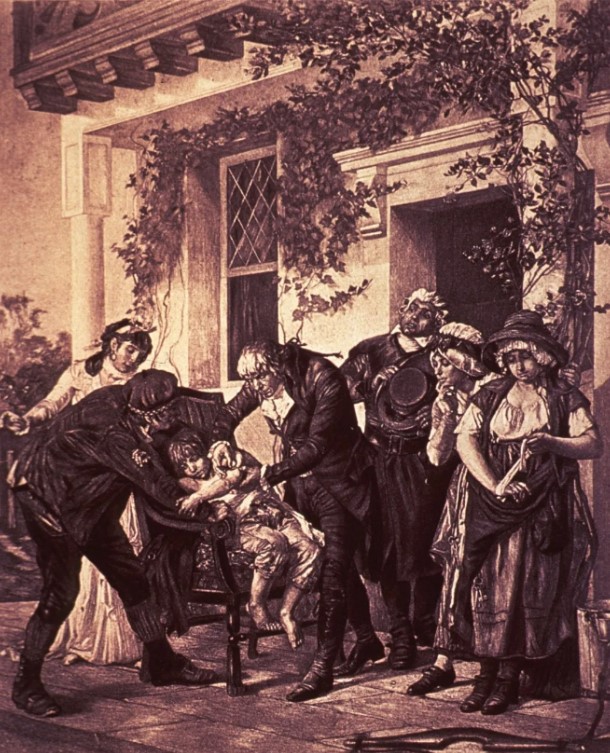
"Jenner vaccinating James Phipps" (History of Vaccines)
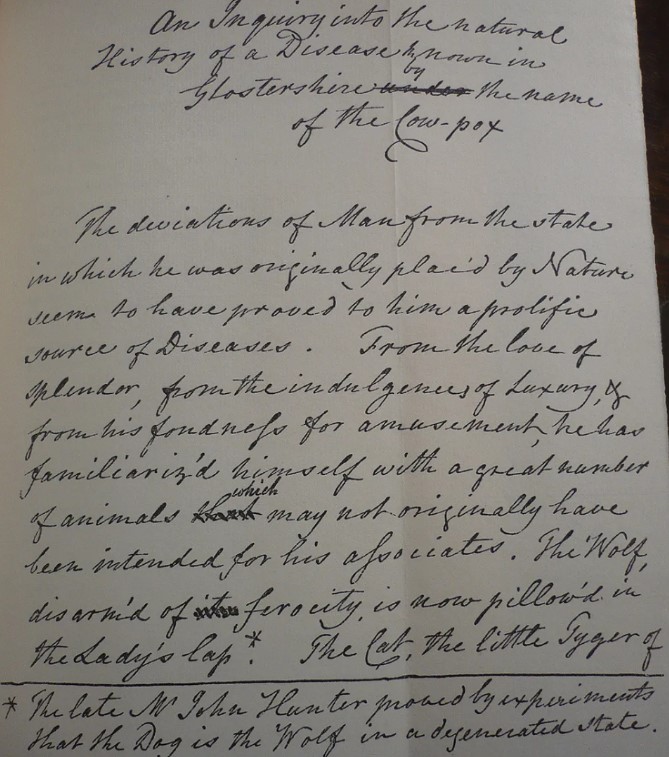
“Facsimile of the first page of Jenners Inquiry Manuscript” (Davies).
Dr. Edward Jenner, a British physician, became known as “The Father of Vaccines” for creating the smallpox vaccine, a medical turning point. Jenner was interested in smallpox because of the devastation it created. He heard tales that dairymaids didn’t get smallpox, one telling him,“I shall never have smallpox for I have had cowpox”. (Riedel) He concluded that cowpox, a similar and less dangerous pox disease, gave immunity from smallpox. To test this theory, on May 14, 1796, he inoculated young James Phipps with matter from a cowpox sore. Phipps felt unwell, but fully recovered. Then, Jenner exposed Phipps to smallpox and found he was immune.
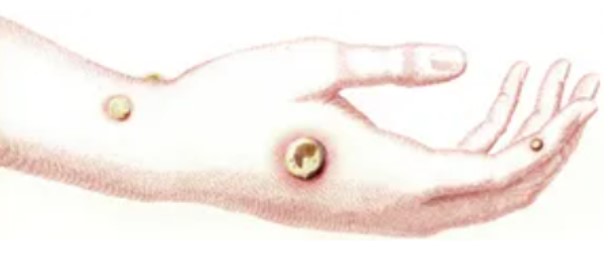
"The Cowpox sores on the hands of Sarah Nelmes." (Smith)
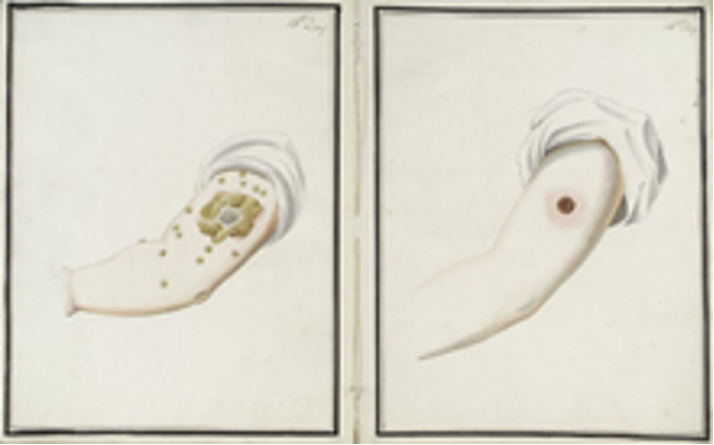
"Comparison of smallpox (left) and cowpox (right) inoculations 16 days after administration." (Handu)
"In this dairy country a great number of cows are kept, and the office of milking is performed indiscriminately by men and maid servants. One of the former having been appointed to apply dressings to the heels of a horse affected with the grease, and not paying due attention to cleanliness, incautiously bears his part in milking the cows, with some particles of the infectious matter adhering to his fingers. When this is the case, it commonly happens that a disease is communicated to the cows, and from the cows to the dairymaids, which spreads through the farm until the most of the cattle and domestics feel its unpleasant consequences. This disease has obtained the name of the cow-pox…….Thus the disease makes its progress from the horse to the nipple of the cow, and from the cow to the human subject….what renders the cow-pox virus so extremely singular is that the person who has been thus affected is forever after secure from the infection of the smallpox; neither exposure to the variolous effluvia, nor the insertion of the matter into the skin, producing this distemper.
In support of so extraordinary a fact, I shall lay before my reader a great number of instances."
- Edward Jenner
"Case III. - John Phillips, a tradesman of this town, had the cowpox at so early a period as nine years of age. At the age of sixty-two I inoculated him, and was very careful in selecting matter in its most active state. It was taken from the arm of a boy just before the commencement of the eruptive fever, and instantly inserted. It very speedily produced a sting-like feel in the part. An efflorescence appeared, which on the fourth day was rather extensive, and some degree of pain and stiffness were felt about the shoulder: but on the fifth day these symptoms began to disappear, and in a day or two after went entirely off, without producing any effect on the system."
- Edward Jenner
"Case IV. - Mary Barge, of Woodford, in this parish, was inoculated with variolous matter in the year 1791. An efflorescence of a palish red colour soon appeared about the parts where the matter was inserted, and spread itself rather extensively, but died away in a few days without producing any variolous symptoms. She has since been repeatedly employed as a nurse to smallpox patients, without experiencing any ill consequences. This woman had the cow-pox when she lived in the service of a farmer in this parish thirty-one years before."
- Edward Jenner
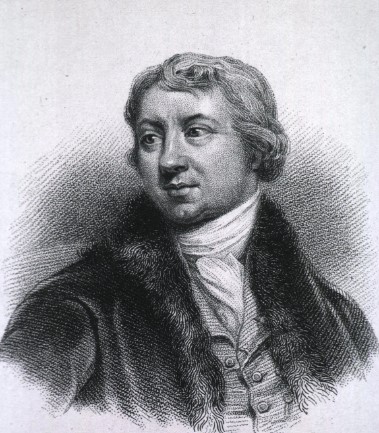
Edward Jenner (Davies)

"Jenner vaccinating James Phipps" (History of Vaccines)

“Facsimile of the first page of Jenners Inquiry Manuscript” (Davies).
Jenner published his observations in 1798. He faced opposition from scientists because his research was vague, and from variolators whose income was threatened, but some people preferred the idea of vaccination over variolation. Jenner had difficulties obtaining cowpox sores to experiment with and experienced financial problems. Additionally, contemporary scientific knowledge was limited as germ theory and immunity were not yet understood. Regardless, Jenner’s attitude was positive: “I hope that someday the practice of producing cowpox in human beings will spread over the world - when that day comes, there will be no more smallpox.” (Jenner, myhero.com) Jenner wasn’t the first to experiment with using cowpox to give immunity from smallpox. Benjamin Jesty had tested it in 1774, but didn’t publicize his work, so he remained unknown. Jenner was the first person to record this idea and publish it.
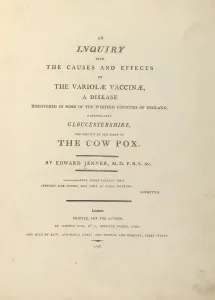
"Edward Jenner published his inquiry about his smallpox vaccine in 1798." (Iannelli)